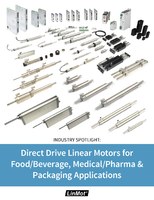NTSB Safety Recommendations look at fatigue management.
Share:
Press Release Summary:
Supplementing reiterations, NTSB issued 3 new safety recommendations to Federal Motor Carrier Safety Administration. These included H-12-29, for establishing ongoing program to monitor, evaluate, report on, and continuously improve fatigue management programs; H-12-30, for incorporating scientifically based fatigue mitigation strategies into hours-of-service regulations; and H-12-30, for reviewing each new entrant motor carrier structured process as component of new entrant safety audits.
Original Press Release:
NTSB Safety Recommendations H-12-29 through -31
The National Transportation Safety Board recommends that the Federal Motor Carrier Safety Administration:
H-12-29
Establish an ongoing program to monitor, evaluate, report on, and continuously improve fatigue management programs implemented by motor carriers to identify, mitigate, and continuously reduce fatigue-related risks for drivers. (This safety recommendation supersedes Safety Recommendation H-08-14.)
H-12-30
Incorporate scientifically based fatigue mitigation strategies into the hours-of-service regulations for passenger-carrying drivers who operate during the nighttime window of circadian low.
H-12-31
As a component of your new entrant safety audits, review with each new entrant motor carrier a structured process, such as the Safety Management Cycle, to (1) identify the root cause of safety risks and (2) maintain an effective safety assurance program.
The NTSB also reiterated the following three previously issued recommendations to the FMCSA:
H-10-9
Require all motor carriers to adopt a fatigue management program based on the North American Fatigue Management Program guidelines for the management of fatigue in a motor carrier operating environment.
H-03-2
Require all new motor carriers seeking operating authority to demonstrate their safety fitness prior to obtaining new entrant operating authority by, at a minimum: (1) passing an examination demonstrating their knowledge of the Federal Motor Carrier Safety Regulations; (2) submitting a comprehensive plan documenting that the motor carrier has management systems in place to ensure compliance with the Federal Motor Carrier Safety Regulations; and (3) passing a Federal Motor Carrier Safety Administration safety audit, including vehicle inspections.
H-99-6
Change the safety fitness rating methodology so that adverse vehicle and driver performance-based data alone are sufficient to result in an overall unsatisfactory rating for the carrier.
The NTSB reclassified as "Closed-Acceptable Action/Superseded" the following previously issued recommendation to the FMCSA:
H-08-14
Develop and use a methodology that will continually assess the effectiveness of the fatigue management plans implemented by motor carriers, including their ability to improve sleep and alertness, mitigate performance errors, and prevent incidents and accidents. (This safety recommendation is superseded by new Safety Recommendation H-12-29.)




